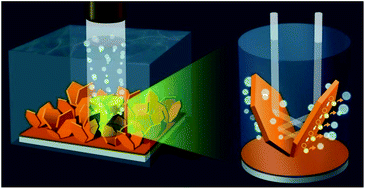Cu2ZnSnS4 (CZTS) is promising for application in photoelectrochemical (PEC) water splitting systems, owing to its high absorption coefficient, abundance, non-toxicity and direct band gap suitable for solar conversion. Here we present a scalable route for the preparation of single crystalline CZTS nanosheet arrays (NSAs) on a conductive glass substrate by using CuS nanosheets (NSs) as a sacrificial template. When employed as a photocathode for PEC solar hydrogen production, the CZTS NSAs yield a photocurrent density of −1.32 mA cm−2 at 0 V versus the reversible hydrogen electrode under illumination of AM 1.5. This is the highest value ever reported for a CZTS-based electrode without a co-catalyst and protective layer. The CZTS NSAs photocathode remains active after 3.5 h of testing and maintains 60% of its initial photocurrent. This work demonstrates the reality of using earth-abundant CZTS for efficient hydrogen production.

